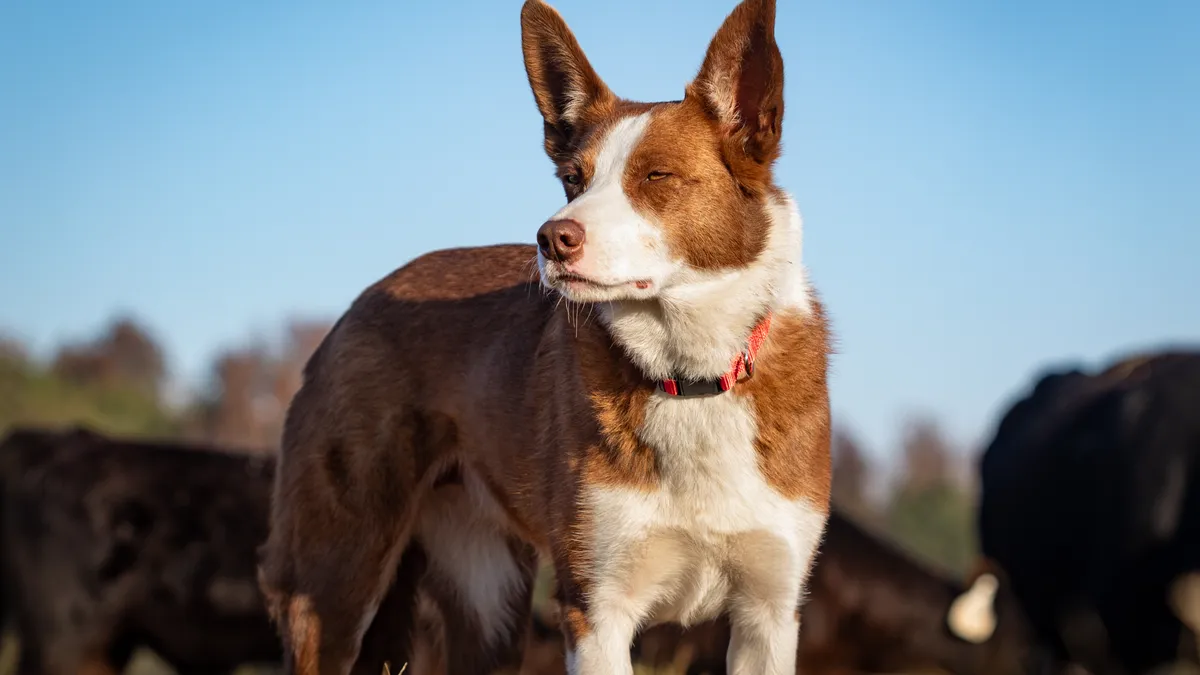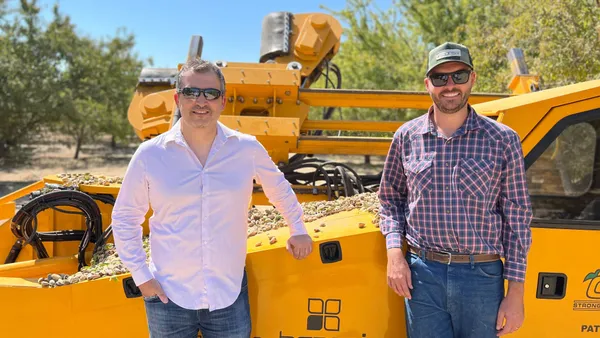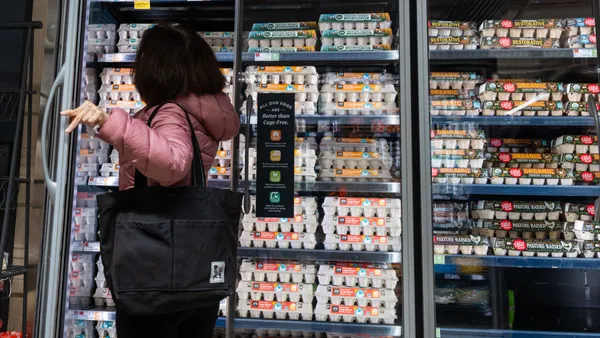For Laura and Donald Adams, having their farm dog Skippy, the reigning Farm Dog of the Year, has been transformative. After an accident left Donald paralyzed from the neck down, Skippy’s help has allowed Donald to continue to manage the farm and cattle.
“It’s pretty straightforward. It's a dog that’s a great helper on the farm,” said Cyndie Shearing, a spokesperson for the Farm Bureau said in an interview. “In addition to that, they have a special place in the family. They're also a companion.”
What sets Skippy apart, according to owner Laura Adams, is the uniqueness of their story and the fact that Skippy has become an indispensable part of the family. In one instance, Donald, who is now able to walk on canes, was attempting to open the pasture for the cattle when the animals crowded around him. Skippy saw this, and helped herd the livestock away from the gate, protecting her human and helping him move the cattle through without danger to himself.
“Stories like that, where they have gone above and beyond helping a family member, are what the judges are looking for,” said Shearing. “And that they’re not just a pet, they’re part of the family.”
The American Farm Bureau Federation, is holding its seventh annual Farm Dog of the Year competition this summer. Winners receive cash prizes and a year’s worth of Purina Pro Plan dog food, in addition to being featured by the Farm Bureau at its annual convention and online.
The competition celebrates farm dogs and the ways they support farmers and ranchers, from the important role they play working on the farm to enriching the lives of farmers through their steadfast companionship.
Cindy Deak, owner of Fit, the 2022 Farm Dog of the Year, trains herding dogs at NorAust in Lady Lake, Florida. Deak says training a good farm dog starts when they’re young, and that certain breeds make better farm dogs because they’re bred for herding. She does instinct testing on puppies to see if they have the right inclination for the job, and from there, training starts with basic commands.
“You start when they're young with the very basics. You keep them away from sheep, you teach them just to be a good dog to listen to a couple of commands: walk politely on a leash or to lie down,” she says. Before moving on, when they’re 9 to 12 months old, to acclimating to livestock, responding to directional commands and then more advanced work like herding sheep.
“The best thing you can do for a young working dog is teach it general behavior, how to work with humans, listen to commands, you know, and get it to be your partner,” Deak says.
For people thinking about getting a farm dog, Deak says to first consider what kind of work the dog will need to do, to look for a reputable breeder and to find a good mentor.
“Go train with someone that knows what they're doing. It's really important to find a good mentor,” she says. “Always try to find quality instruction, a good mentor, to help you learn how to train your dog properly and responsibly, and then always be willing to help the people that are coming up in the working world,.” she said.
She also urges dog owners to be patient with young pups.
“Sometimes people that come to me for help have purchased a young dog and they're expecting a 12-month-old dog to be able to do the same thing that a 3three-year-old dog can do that is fully trained,” she says. “They put too much pressure on a young dog to be exactly right.”
For those needing help more quickly, Deak recommends finding a partially trained farm dog that already knows commands and is accustomed to working around livestock.
In addition to formal training, many farm dogs also learn on the job, according to Shearing.
“Dogs that perform duties that are very specific to a particular farm or ranch may informally learn ‘on the job’ from their farmer,” she said. “For example, dogs that greet visitors on an agri-tourism farm or fetch/carry tools.”
The Farm Bureau hopes that the competition draws attention to the special bonds humans have with their working dogs, and to help bring more attention to the agriculture community in general.
“We do this contest, in large part, because we found it really provides a window into the world of agriculture through a shared love of pets,” Shearing said. “So it's really a way to forge connections and to help people learn a little bit about agriculture and that way.”










